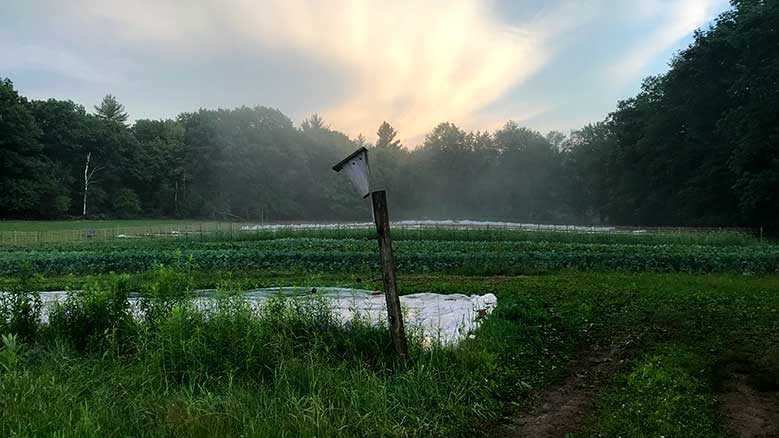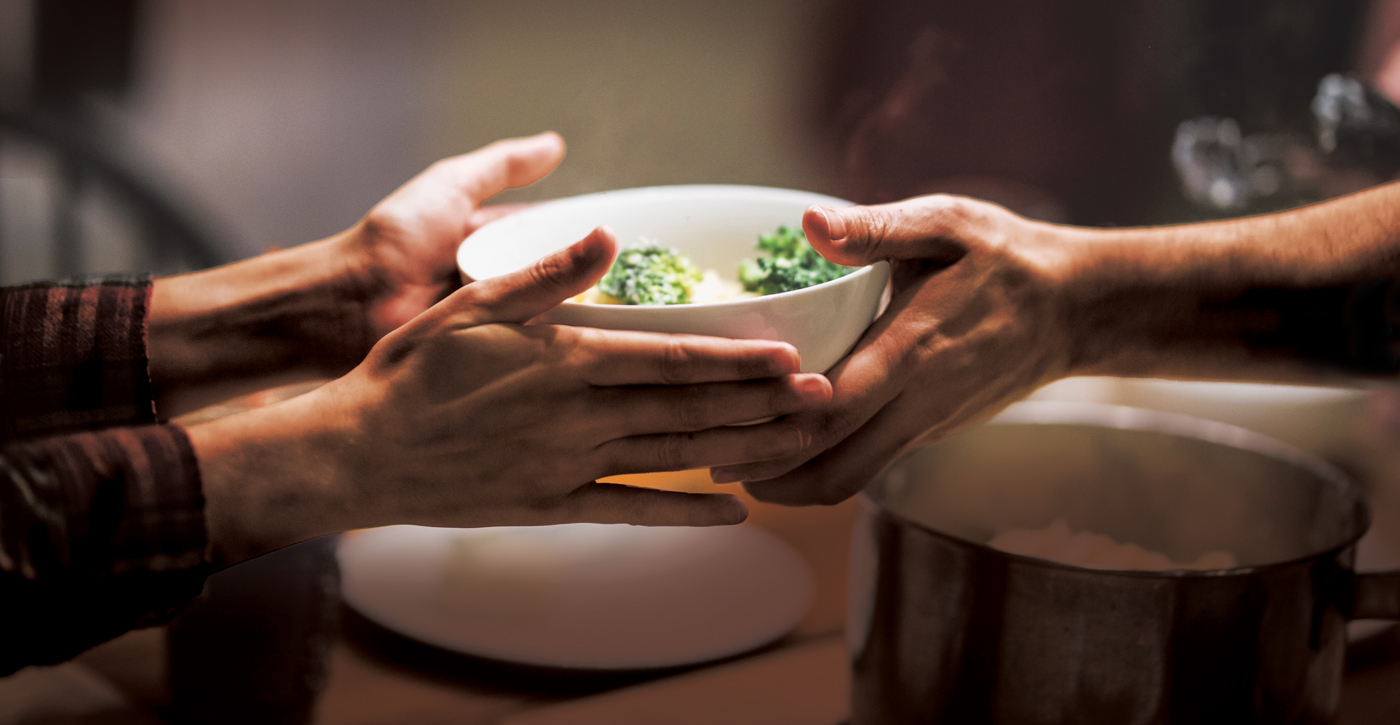My family and I eat locally grown food three meals a day, every day. My neighbor and her family do the cooking, and we talk together, sharing stories as we eat. I don’t cook much anymore, myself. Years ago, however, when I lived on a little farm in the Shenandoah Valley of Virginia, I was a compulsive "from scratch" kind of cook. These days I work to benefit my community, and I leave the cooking to others.
My friend buys the raw ingredients for our meals at a local market and, occasionally, directly from local fishermen. Area farm families bring their produce to market by bicycle, motorbike, and city bus. Families in my neighborhood often eat breakfast at a local soup shop, but they always head home from work or school at midday for a home-cooked lunch and a nap. Dinner, too, is a "cooked from scratch" family affair.
This is life in the "third world" country of Vietnam. It doesn’t sound too bad, does it?
Food travels an average of 1,500 miles before it ends up in a mouth in the United States. Ecologists tell us that this way of eating—gathering that well-traveled food from supermarket shelves and take-out windows—is not sustainable. Eating foods from multiple continents at one meal flies in the face of the Friends Testimony of Simplicity. We don’t need to be psychic to perceive that a finite oil supply and a shrinking dollar will eventually spell the end of this moveable feast. Eventually, circumstances will force a major revision for this way of eating—and those changes will be wrenching indeed, unless we prepare for them now.
It’s readily apparent that much of the farmland in the United States—especially near population centers—has been replaced by pavement and suburban sprawl. What is less obvious is that we are also losing the skills of farmers who once knew how to grow food for people. A substantial portion of farmland is used now for growing corn to produce factory-farmed meat, industrial foods such as high-fructose corn syrup, and ethanol to fuel automobiles. The skills and labor required to bring in a crop of hybrid field corn bear almost no relationship to those required to grow fresh vegetables for human consumption. Also, unless you have been one, it’s difficult to realize how effectively the small farmer has been shut out of the nation’s food distribution system. A farmer in Iowa, growing field corn destined for the Cargill Company, must only get the crop to a local grain elevator at harvest time each year in order to collect a payment and a government subsidy check. Even with this relatively stable source of income, however, most U.S. farmers today rely on off-farm employment to help support their families.
If a farmer decides to grow tomatoes and green beans, selling the crop becomes much more problematic. A market farmer in central Iowa might need to send the produce, a pick-up truck, and a family member to a parking deck in Iowa City once or twice a week in order to participate in the Farmers’ Market. There he or she would spend several hours, chatting up a trickle of city folks and suburbanites while they decide whether or not to buy the farmer’s green beans. This is an enormous amount of time and effort to clear very little money—and most farmers are not natural-born salespeople. One brilliant exception is my former neighbor Joel Saliten, the Shenandoah Valley farmer featured prominently in Michael Pollan’s book, The Omnivore’s Dilemma: A Natural History of Four Meals.
Disappearing farmlands, loss of market gardening skills, and a fragile distribution network are serious impediments to eating locally, but they’re not the only ones. Another is that shopping for, as well as preparing, food cooked "from scratch" takes both time and skill. Time limitations aside, even if we were to get hold of locally grown produce, many of us would be at a loss as to exactly what to do with it!
I’m in my 50s, but "raw materials" for meals in the home where I grew up included canned macaroni, frozen spinach, and Spam. A "special occasion" casserole consisted of canned tuna, frozen peas, and Campbell’s Cream of Mushroom soup, topped off with crumbled potato chips. When my husband and I bought a little farm and tried to "live off the land" many years later, we not only had to learn how to grow our food, but also how to cook the sorts of vegetables that would grow readily in the Shenandoah Valley. We learned, for example, that spinach can only be grown in very cool weather, so the spinach season is very, very short. The entire spinach plant, however, can be harvested mechanically, freezes well, and thus is the cooked green vegetable which most of us grew up on. Swiss chard and kale, on the other hand, are garden greens that grow well in the summer and the winter, respectively, in temperate climates. Both plants can be hand-picked repeatedly for their leaves, leaving the plant itself in place to produce more. Both Swiss chard and kale were foreign to me when I started gardening, but eventually I learned to cook and enjoy them, thanks in large part to the wonderfully down-to-earth advice and delicious recipes provided in the Victory Garden Cookbook by Marian Morash.
I learned what I could about old-time farming techniques from books, county extension agents, and old farmers that I met in the course of my physical therapy practice. My cooking skills developed through trial and error during years when I had large blocks of unstructured time and a whole lot of raw material with which to work. How much easier all that would have been had I had the guidance and support of like-minded Friends!
Which brings me to the role that I envision for food activists within Friends meetings. When one realizes the importance of establishing a viable local food network as well as the obstacles preventing its realization, it becomes apparent that intentional work is needed. Establishing local food networks is essential to both our well-being and that of the planet. Yet there’s little to no monetary profit to be made in trying to replace the present system of mass production and distribution of factory foods, especially in the early stages of the effort. This is not something that big business has any incentive to develop. But we, as clear-eyed members of caring communities, have priorities other than profit or convenience. Establishing a local network with no expectation of financial gain requires the cooperation of a community of like-minded individuals. We already have that in our Quaker meetings. A project like this, done in a loving spirit, can serve to strengthen that core community as well as draw in additional like-minded folks.
Here are my suggestions for a core group of committed Quakers:
- Cultivate a relationship with one or more local farmers. You can connect with farmers at farmers’ markets, through the county extension service, or, perhaps, through a nearby Mennonite church.
- Commit to purchasing vegetables from them and plan to use those veggies to prepare a community meal after meeting for worship each week.
- Invite everyone from the meeting.
- Allot an hour between close of meeting for worship and the start of the meal to allow time for food preparation and for formal and informal get-togethers among other members and attenders.
- Invite others to help prepare the meal. Share recipes. Learn from each other.
- Have a contribution box to help cover expenses.
- Devise a way for others to add their vegetable purchase orders to your own on subsequent weeks. Make it simple for them to purchase locally grown produce for their own families.
I would advise food activists to consider this to be a gift to the community. The gift consists not only of the time, money, and effort required to transport and prepare food for a weekly communal luncheon, but also of the connections forged with local farmers and the skills required to transform raw vegetables into something new and delicious. And perhaps the greatest gift you offer the community is in providing an incentive for others to hang around after the meeting for worship so that they can socialize.
My little daughter used to ask me, whenever we headed off to an event of any kind, "Will there be food?" If I answered yes, she was content. An hour’s time between the end of meeting for worship and the start of the community meal, as the aroma of cooking wafts through the meetinghouse, could present a wonderful opportunity for Friends to meet, both formally and informally.
Can this project continue beyond the warmth of summer? There are low-tech ways to extend the growing season, even in chilly New England. But these techniques require labor and know-how. They also require consumers who understand the difference between purchasing lettuce grown under a cold frame in Pennsylvania or Indiana, and buying produce trucked in from California or Mexico.
Be that knowledgeable consumer! Develop a market for local produce and work with local farmers as they struggle to learn how to farm as their grandparents did. Consider using this vital exercise as a means to develop a closer and more caring community for the benefit of all.



